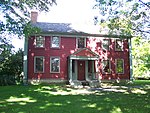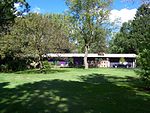Our Lady of Mercy School for Young Women

Our Lady of Mercy School for Young Women is a private all-girls Catholic school teaching grades 6–12, located in Brighton, Monroe County, New York, United States, near Rochester. It is located within the Roman Catholic Diocese of Rochester. The American Sisters of Mercy founded Our Lady of Mercy High School in Rochester in 1928, based in the tradition of the Roman Catholic sisterhood begun by Catherine McAuley, founder of the Sisters of Mercy. The building was built in 1928, and designed by noted Rochester architect J. Foster Warner (1859–1937). It educated young women in grades 9-12 for the first six decades of its operation, branching out to include grades 7 and 8 in 1990. In September 2012, Our Lady of Mercy High School expanded to include grade 6. To reflect this change, its name was changed to Our Lady of Mercy School for Young Women.
Excerpt from the Wikipedia article Our Lady of Mercy School for Young Women (License: CC BY-SA 3.0, Authors, Images).Our Lady of Mercy School for Young Women
Outer Loop,
Geographical coordinates (GPS) Address Nearby Places Show on map
Geographical coordinates (GPS)
| Latitude | Longitude |
|---|---|
| N 43.148333333333 ° | E -77.537777777778 ° |
Address
Outer Loop
14610
New York, United States
Open on Google Maps





